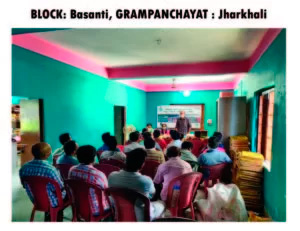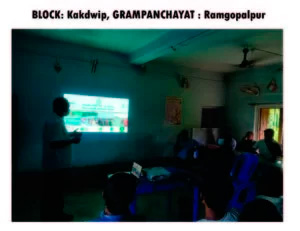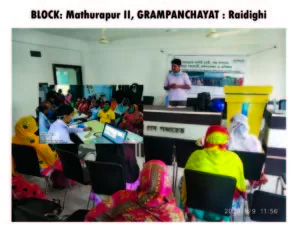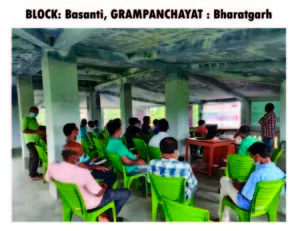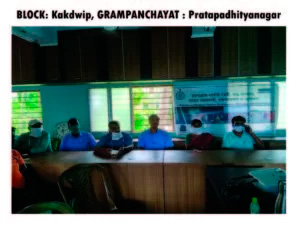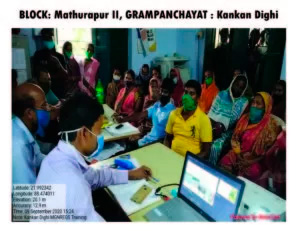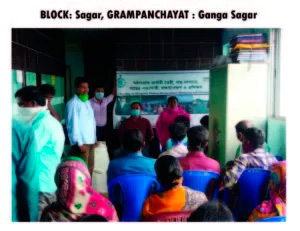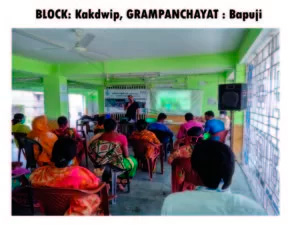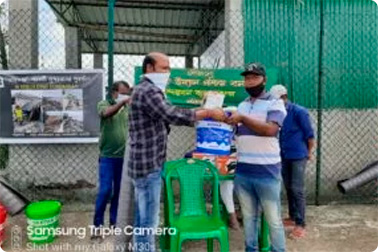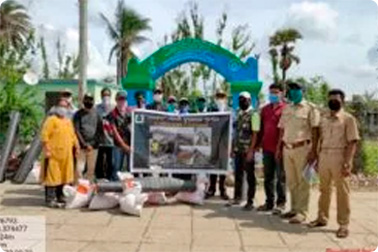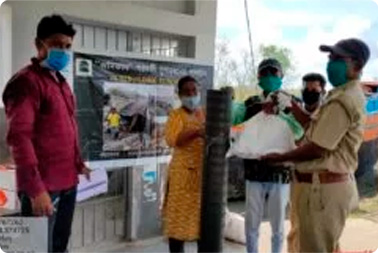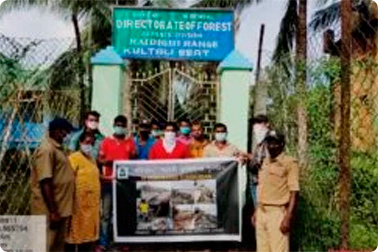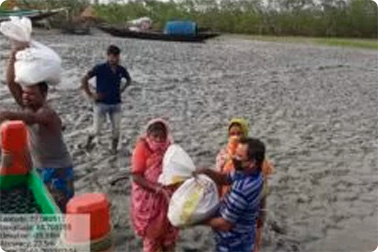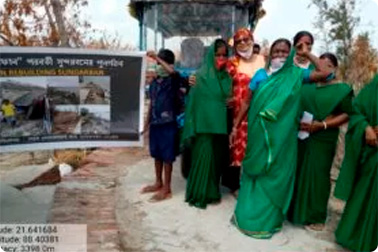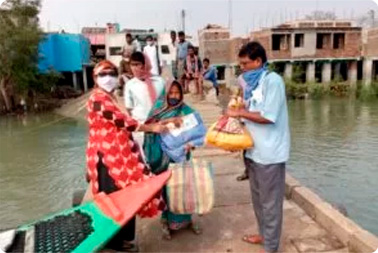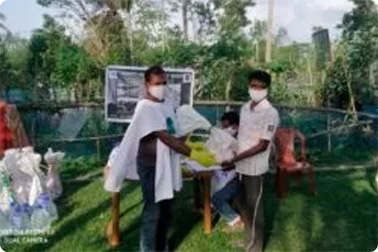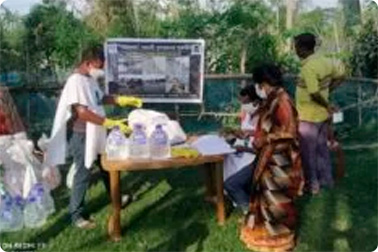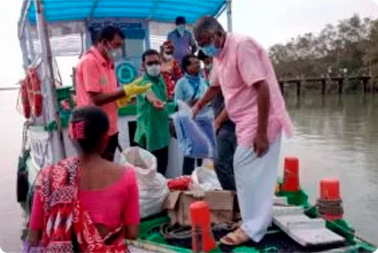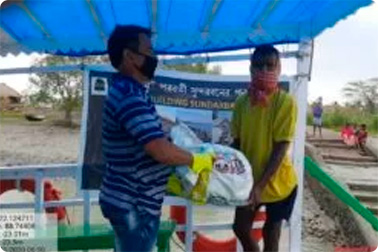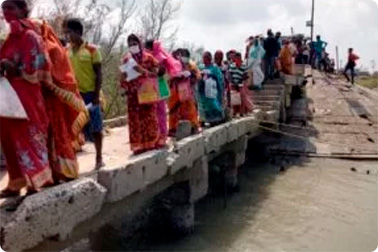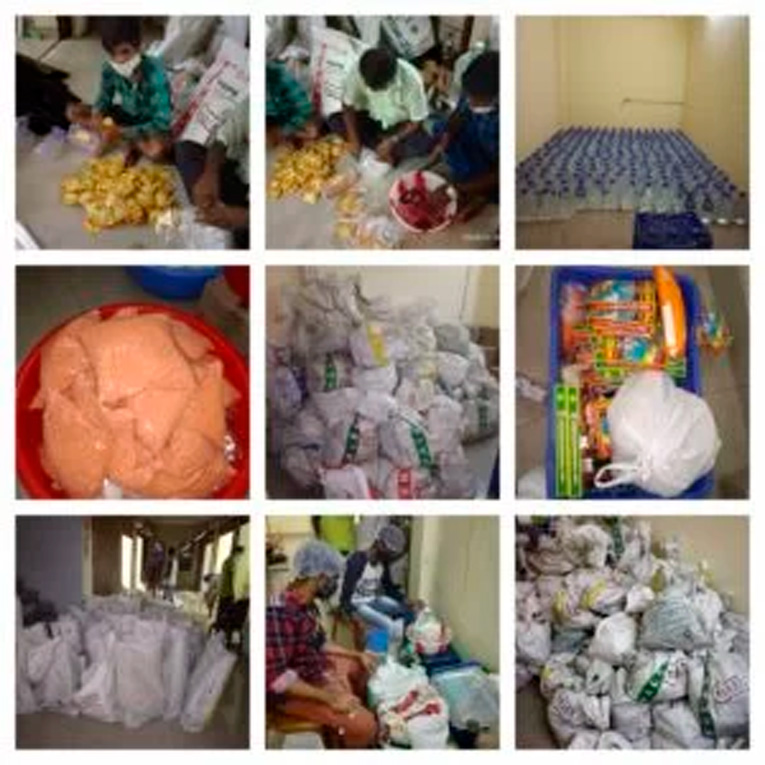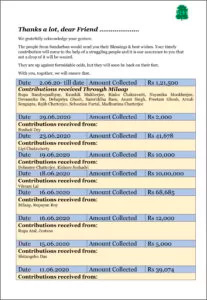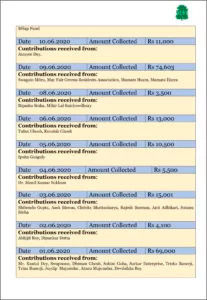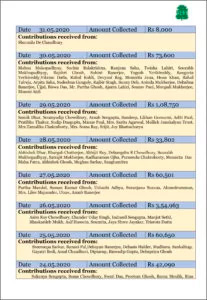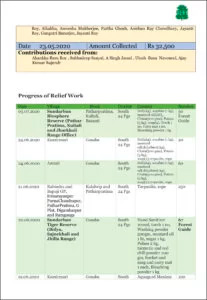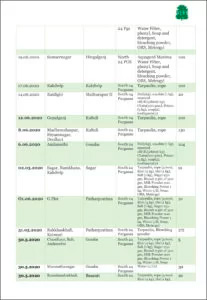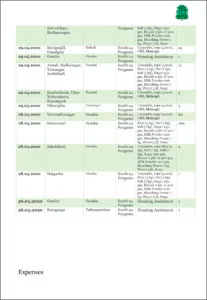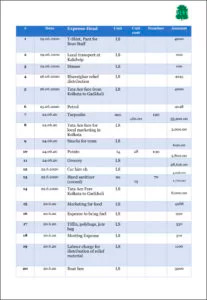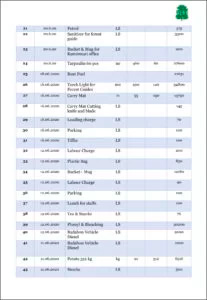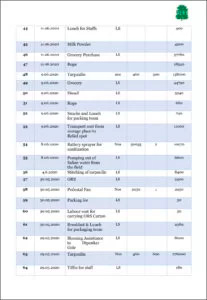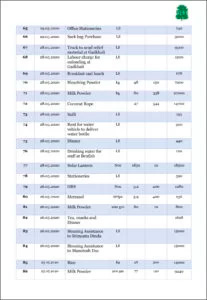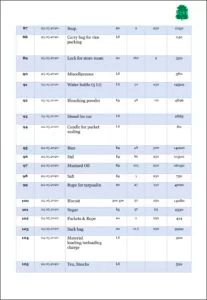
Sundarbans
Sundarbans (‘the beautiful forest’ in English) is a wild fragile mangrove ecosystem in the southern Bengal – fundamental to existence of this part of the world. The delta homes to the biggest mangrove forest on earth and is the only tiger-mangrove. The region is one of the most vulnerable from climate change and increasing disasters. Sunderbans region includes 4263 km2 of Reserve Forest including 1678 km2 in South 24 Parganas Reserve Forest & 2585 km2 in Sunderban Tiger Reserve. Looking back to the history of the protected area, Government of India constituted Sunderban Tiger Reserve [STR] in 1973 under “Project Tiger” scheme. It covers an area of 2585 km2 comprising 1330 km2 core forest and 1255 km2 buffer zone forest. Considering the importance of Sundarban’s Bio-geographic Region, the National Park Area of the Sundarban Tiger Reserve have been included in the list of World Natural Heritage Sites in 1985. The Govt. of India declared the Sunderbans region including the protected area of Sunderban Tiger Reserve as BIOSPHERE RESERVE in 1989. And it received the recognition of UNESCO, under its Man & Biosphere (MAB) Programme in Nov. 2001. Sunderban Reserve Forest has also been nominated for recognition as a Ramsar Site (A Wetland of International Importance). The Indian Sunderban is known as Hoogly-Matla estuary (Hooghly is the Lower part of River Ganges). Besides these two main rivers, there are innumerable big & small rivers which are criss-crossing The Sunderbans namely Bidya, Saptamukhani, Raimangal, Muriganga, Thakuran, Gomor etc. Sunderban is the product of tidal estuary. Here, in the hundreds of creeks & channels the sea water gets diluted with the inflow of fresh water from the rivers, thereby causing tidal fluctuations every day. Sometimes the river swell & again it’s subsides. There are two tides & two ebbs every day.
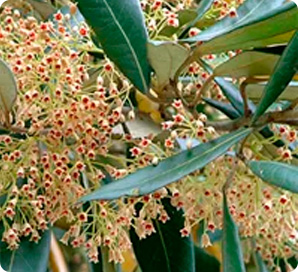
Flora of Sundarbans
Mangrove forest of Indian Sunderbans has a total of 84 recognised flora species out of which 34 are true mangroves. Mangroves are trees of various species of several families which can survive, grow and propagate in sea water or swampy brackish water and alluvial soil in tidal zone. The mouth of the tidal creeks and drivers, where salt and fresh water is mixed in ideal proportion, show the greatest concentration of mangroves in Sunderbans.
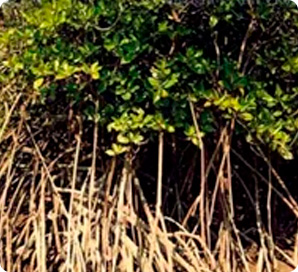
Fauna of Sundarbans
The Sundarbans of India and Bangladesh is the only mangrove in the world where tigers still alive. The Sundarbans provides a unique ecosystem and a rich wildlife habitat. This mangrove is the critical habitat for numerous species of small fish, crabs, shrimps and other crustaceans that adapt to feed and shelter, and reproduce among the tangled mass of roots, known as pneumatophores, which grow upward from the anaerobic mud to get the supply of oxygen. Fishing cats, macaques, wild boars, common grey mongooses, foxes, jungle cats, flying foxes, pangolins, and spotted deer are also found in abundance in the Sundarbans. Sundarbans supports diverse biological resources including at least 250 species of commercially important fish, 270 species of birds, 42 species of mammals, 35 reptiles and 8 amphibian species.
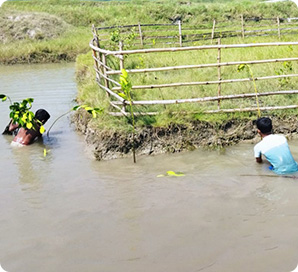
The Community
Sunderbans is not only a land of mangroves, rivers and tigers. It also homes to 6 million people in India. Though agriculture and fishery is the major livelihood here, a large portion of the people depends heavily on forest products to earn their bread. Continuous threats from cyclonic storms, salinity increase and changing rainfall patterns have made their lives a struggle for existence. Consequences are male migration leaving behind women headed households with children and elderly, the most vulnerable population of society. The famous phrase ‘a tiger on the land, a crocodile in the water’ has supposedly originated from this region. Life in these distant mangrove island villages is on the horns of a dilemma.
Natural Disasters
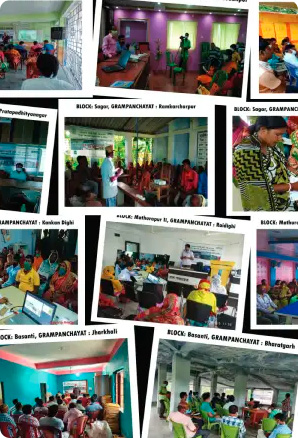
Cyclone Amphan
Together let us build from the wreckage
Even as our planet is in the grip of the COVID Pandemic, a furious cyclone , Amphan, the worst in living memory, has hit the South Bengal coastline, bringing unprecedented misery and destruction to millions. With an eye that was 30 kms in diameter and a windspeed of 185 km/ hr during landfall, the cyclone left a trail of devastation in the coastal areas, with the people gasping for survival. Thousands were evacuated and found temporary shelter in cyclone shelters, flood centres, school buildings in the ravaged areas.
In Sundarban, the ecologically fragile riverine landscape, whichever way you look now, there is only despair and destruction. Thousands of mud houses have been flattened, temporary roofs have been blown away, thousands of trees felled in a matter of hours. Earthen embankments have been breached in several areas, and surging, frothing saline water has flooded hundreds of hectares of land, fish ponds, vegetable gardens. The paddy fields have been inundated, banana orchards spoilt, livestock destroyed, betel vines, paddy storehouses reduced to shambles. Till date, after 5 days of the cyclone, there is no news from Sagar, except one Gram Panchayat in Dhaspara II. No news yet from Buraburir tot, G plot island. Namkhana, Mousuni, Haripur – trees bear a deadly look, as if singed and burnt.
Heavy damages to the earthen embankments have wrecked life in Deulbari, Kaikhali, Debipur, Bhubaneswari, Bongheri, Andheria areas of Kultali block, Ramchandrakhali , Bharatgarh,Jharkhali at Basanti Block,Rangabelia, Bipradaspur, Shambhunagar,Kumirmari at Gosaba Block,G Plot, Ramganga, at Patharpratima Block, in South 24 Parganas and Haridaskati , Samsernagar, Hemnagar, Jagannath Ghat, Sardar Para 1 & 2 of Hingalgunj Block of North 24 Parganas. Saline water flooding miles of crop land will spell disaster as this would severely affect agriculture, fish farming, and sustainable livelihood in large areas of Sundarban.
With life on the edge, living under the open skies in inhospitable terrain and livelihood threatened, a helpless population is devastated. But, in the face of such odds, the people are attempting to rise onto their feet again.
They must. And they will.
They would need support from us, both short term and also for the long haul. Many of them are critical for the survival of a fragile Sundarban.They have been protecting the forests, preserving the mangrove bio shield, engaging in sustainable farming, cultivating with the natural processes, restoring and helping preserve the delicate balance between conservation and development.
Some help needs to be rushed immediately, Dry food, tarpaulin sheets, packaged water, carry mats, candles, match boxes, solar lights, bleaching powder, and medicines.
In the long run, Pucca houses have to be built, their agricultural practices have to be revived. For the youth and the able bodied, suitable livelihood options have to be built around natural resources in a sustainable way, So that they may have the resilience to fight and the dignity to live.
For over twenty five years, Nature Environment & Wildlife Society ,NEWS, in association with reputed International & National Funding bodies have been steadfastly working in the Sundarban backyard in order to develop Stewardship for sustainable management of natural resources. It has been working for the long term rehabilitation and protection of the tropical mangrove ecosystems, as a contribution to climate & coastal protection. It has been working with the participation of the local communities, empowering the women, promoting the practice of a wide range of sustainable livelihood options that include Integrated Mangrove aquaculture, Climate smart farming, Organic kitchen gardens, Bee keeping, Backyard Poultry farming , Culture fisheries and Crab farming, Rain water harvesting, Horticulture etc. It has promoted the Badabon Farmers Producer Company Limited and its brand , Badabon Harvest has enriched the value chain and helped foster market linkage -bringing the Sundarban farmers and urban consumers closer.
There is no going back on all this.
NEWS is fully committed to its mission and vision and has joined the helpless community and started the rebuilding operation, brick by brick.
In this grim battle, your help and assistance are most welcome. What we can do alone, we can do much better, when we have our friends and well-wishers lending a hand, in all capacities !
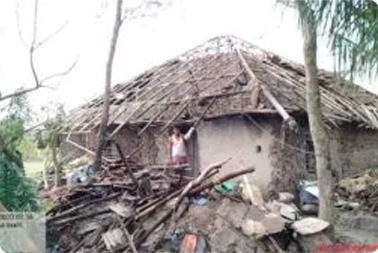

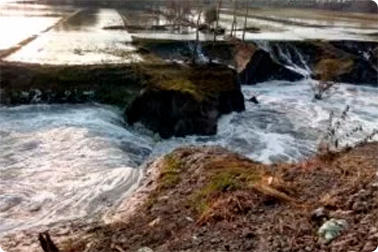
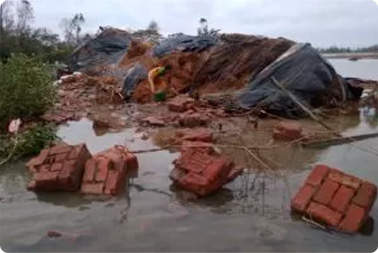
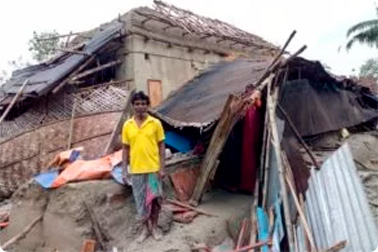

Training on Mangrove Nursery Development, Plantation & Monitoring
NEWS has been conducting training programs in 65 Gram panchayats under 9 blocks in Sundarban in partnership with MGNREGA Sundarban, that has the most extensive mangrove ecosystem in the world, is affected by severe cyclones, tidal effects, widespread flooding & other natural calamities every year. The onrushing saline surge causes soil erosion, breaches the earthen embankments in the islands . and the saltwater floods large areas severely damaging the standing crop, affecting agricultural lands, ponds, homesteads. The mangroves act as bio shields and as sentinels, defend the first line when the storm lashes, standing in the path of the wrathful storm, protecting the island embankments from the fury. On May 20, 2020, the region adjoining the Bay of Bengal, witnessed Amphan, the most furious cyclonic storm in recent times that completely ravaged the area, killing more than 100 and damaging thousands of homes and settlements. The damage was without precedence. On the occasion of the World Environment Day, 2020, Sm Mamata Banerjee, Hon’ble Chief Minister, Govt, of West Bengal, made a historic announcement – the decision of her Govt to plant 5 crore mangrove saplings in the flood-ravaged areas of Sundarban as a natural bio shield to protect the islands. In the light of this decision, Nature Environment & Wildlife Society( NEWS ), who have the requisite experience and the expertise in areas like development of nurseries for mangroves, plantation, monitoring & maintenance of mangrove ecosystems & training of personnel in related work have come forward to work with the Govt in this novel initiative, The objective is to ensure the participation of the local communities, providing training and engaging them in nursery development of mangroves, plantation, monitoring, restoration, and ensuring long term protection of mangroves. The training programs were held at Madhusudanpur, Bapuji, Rabindra, and Ramgopalpur of Kakdwip block, Ramkarchar, Dhospara II, Gangasagar of Sagar Block, Raidighi, Konkondighi and Nagendrapur of Mathurapur Block, Jharkhali and Bharatgarh of Basanti Block on 8th, 9th, and 10th September 2020.
